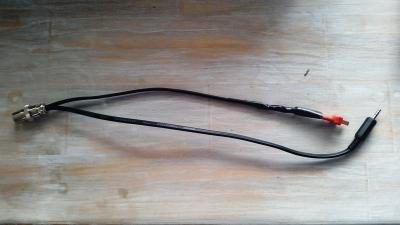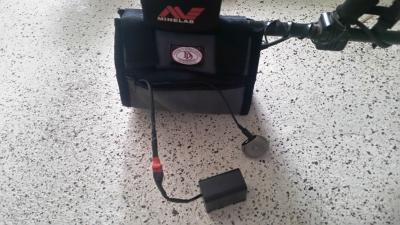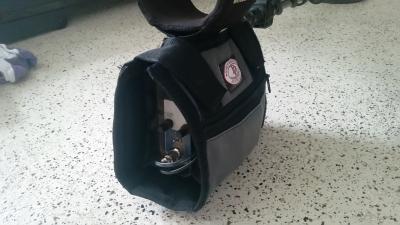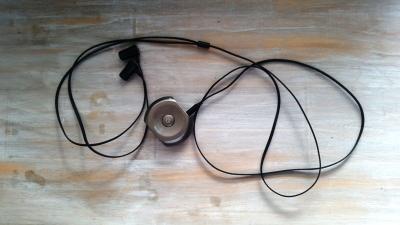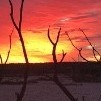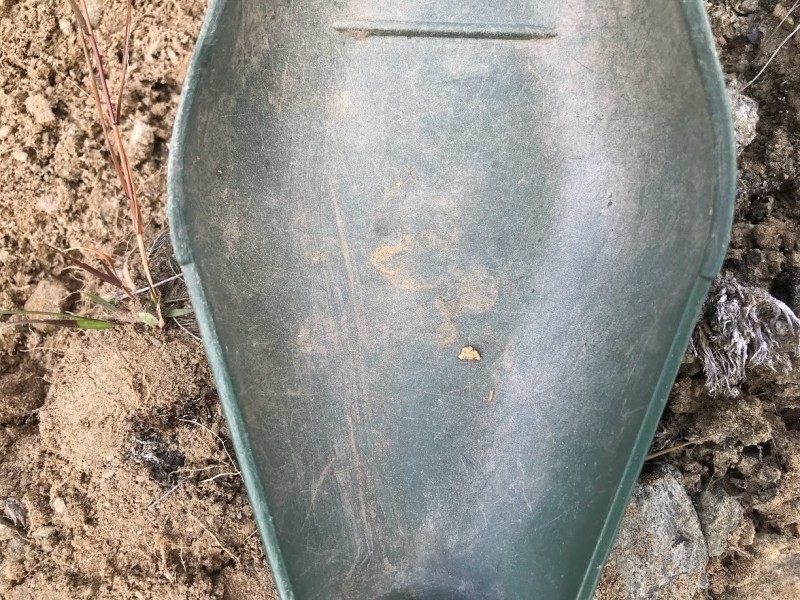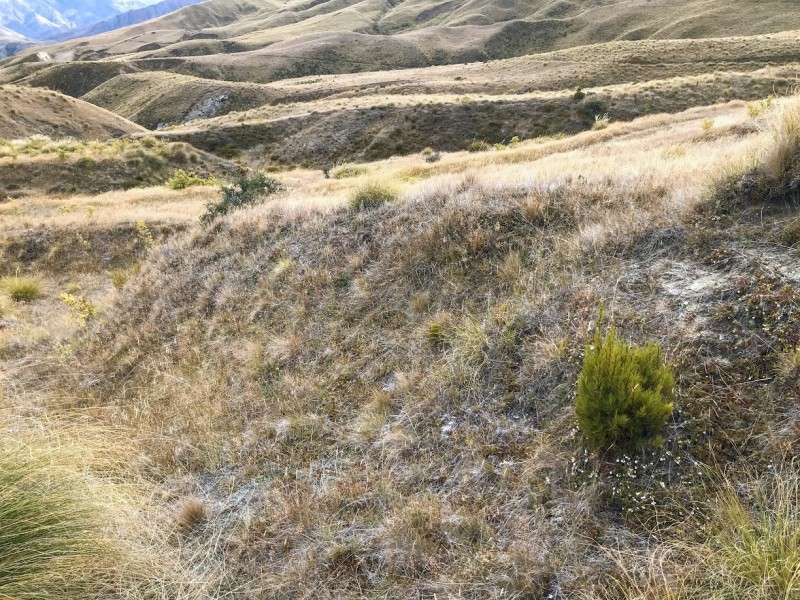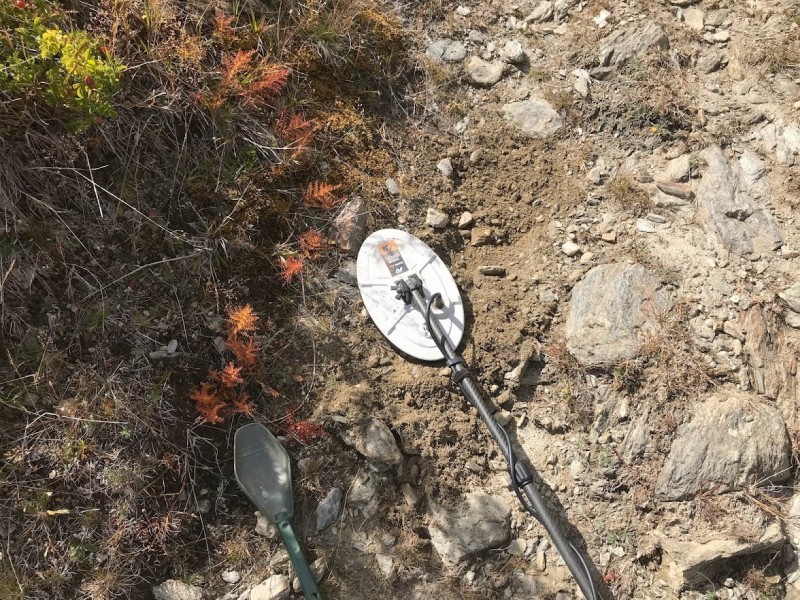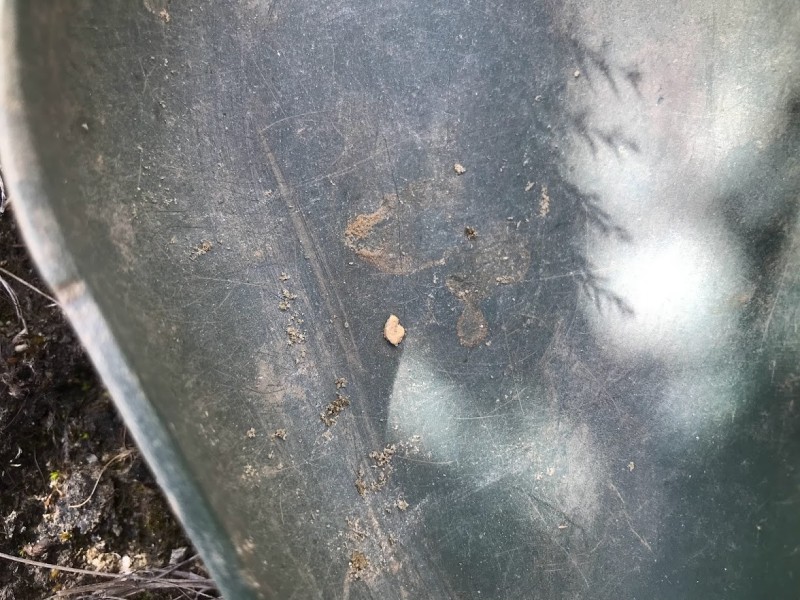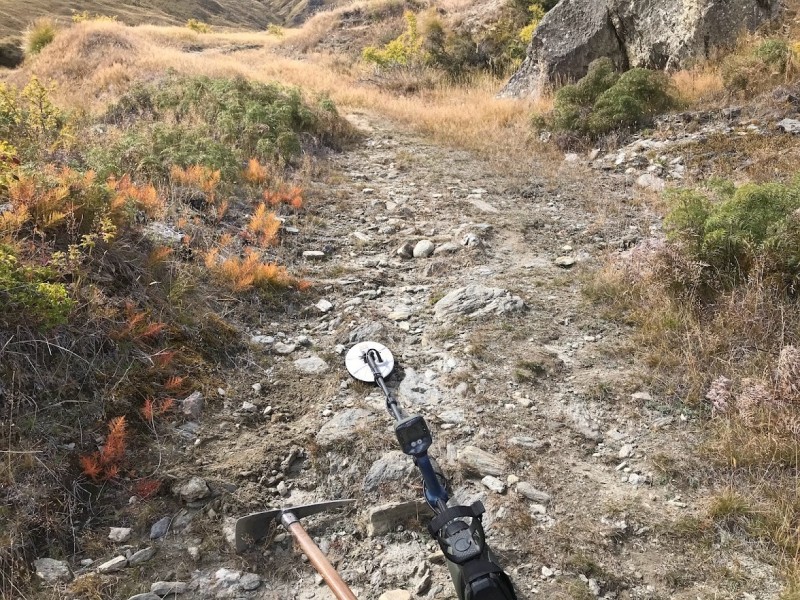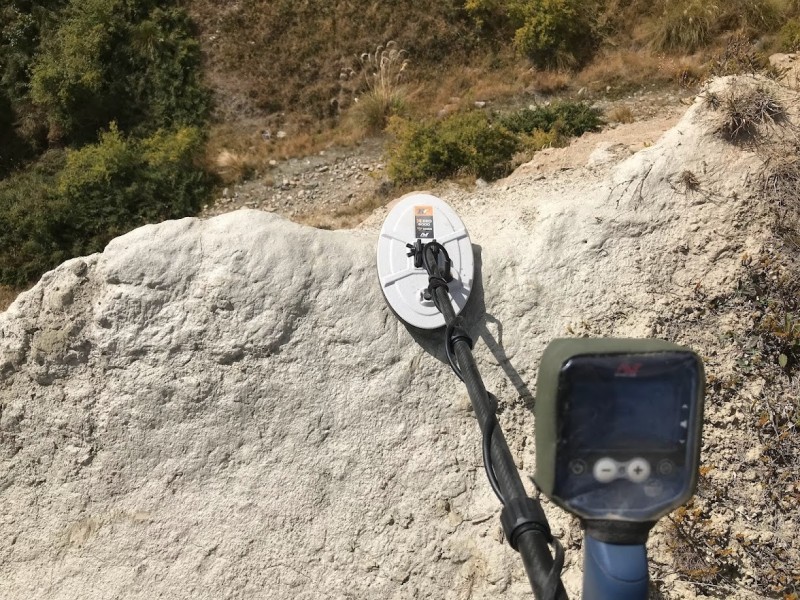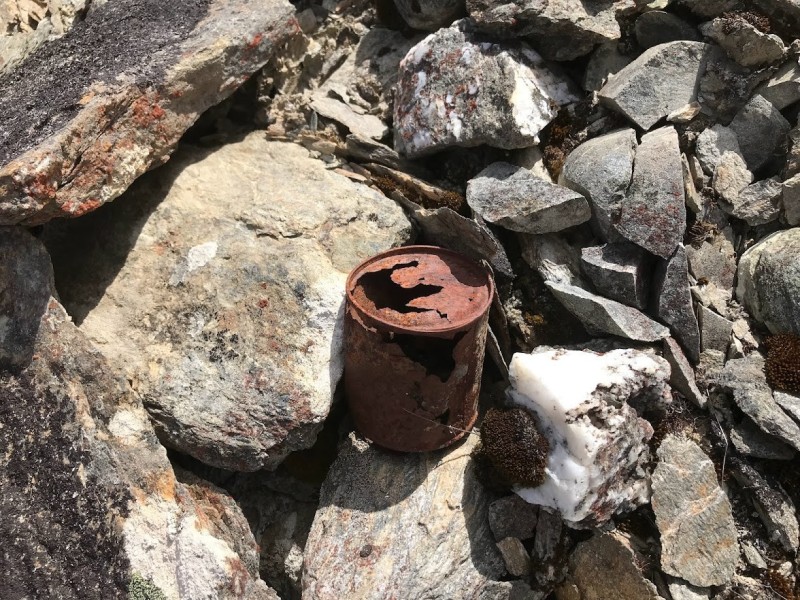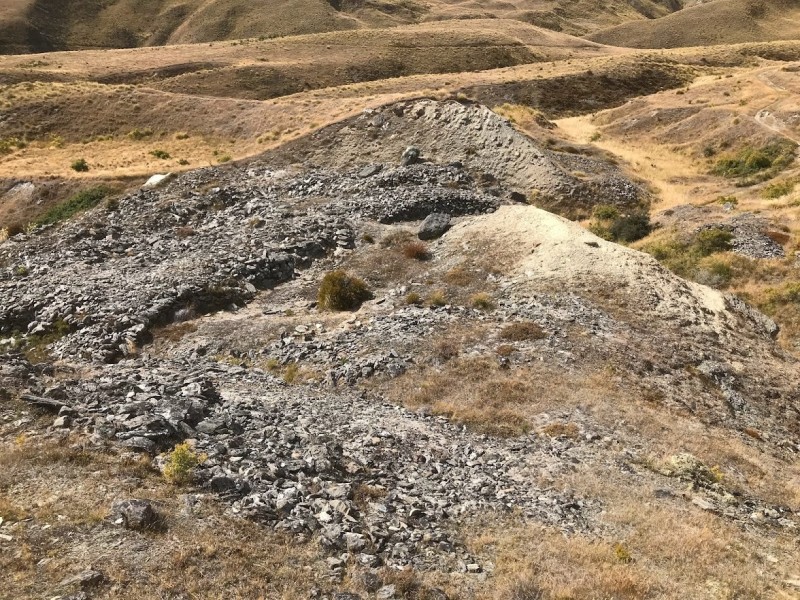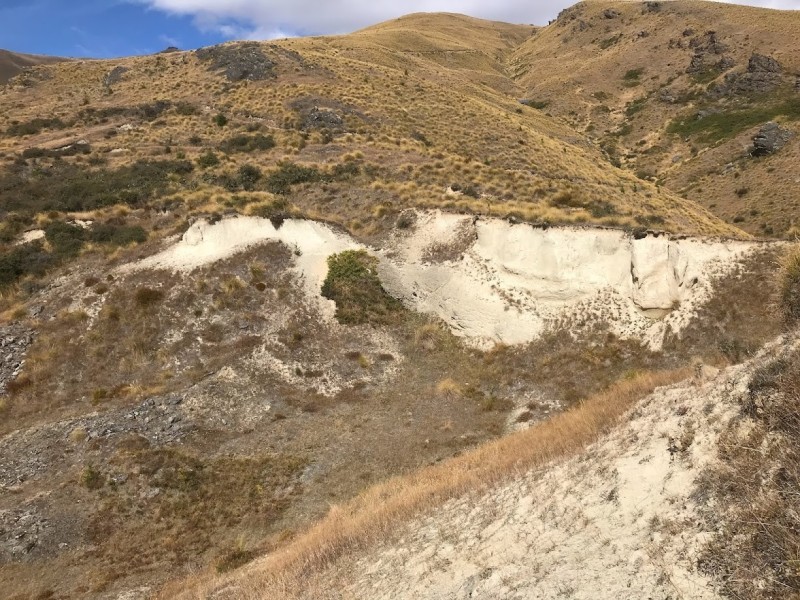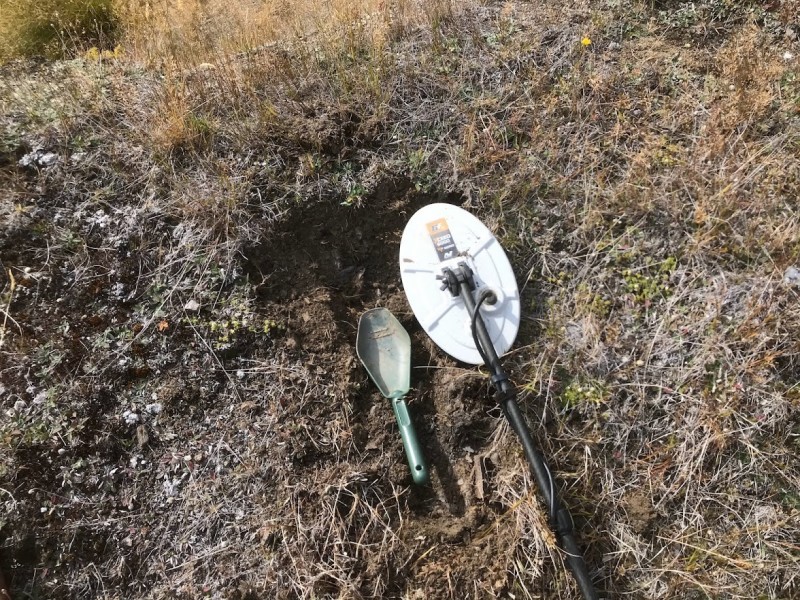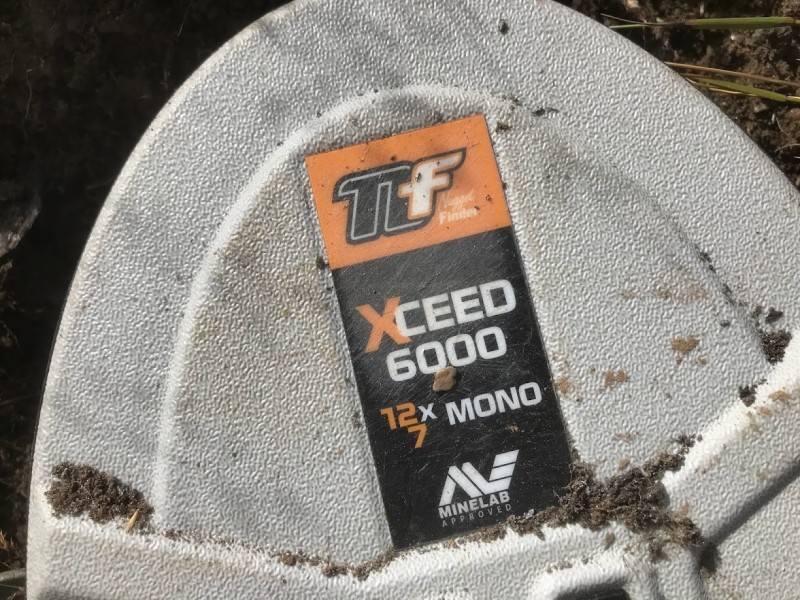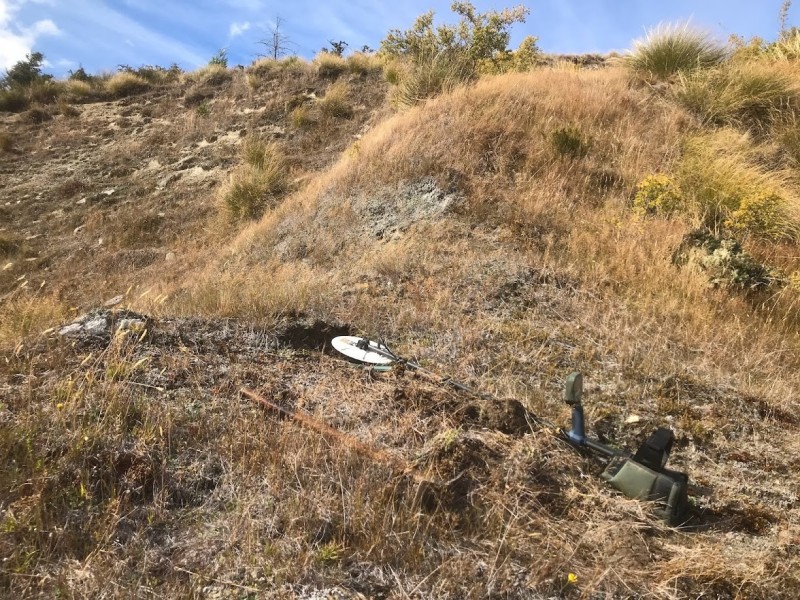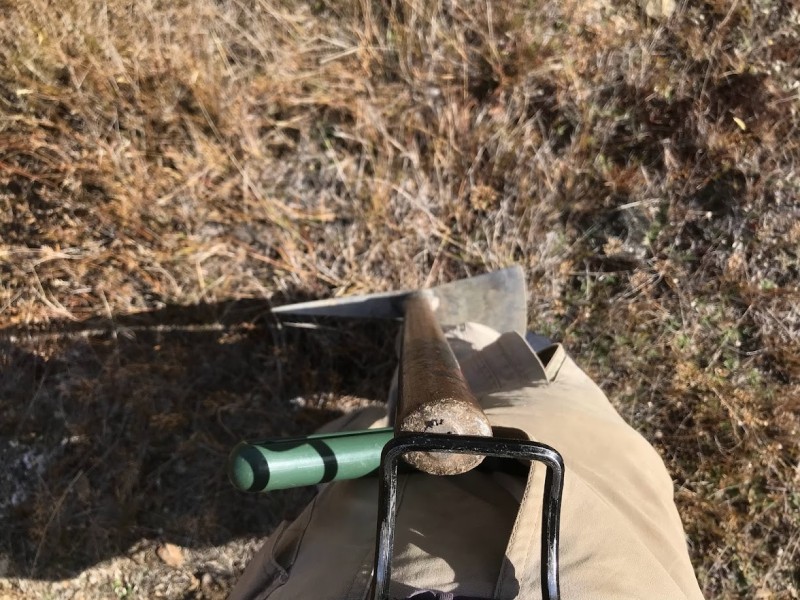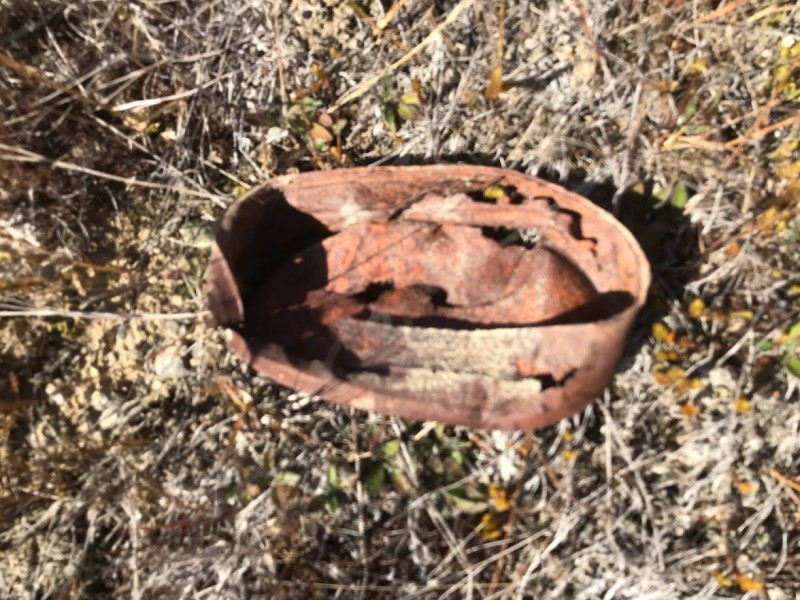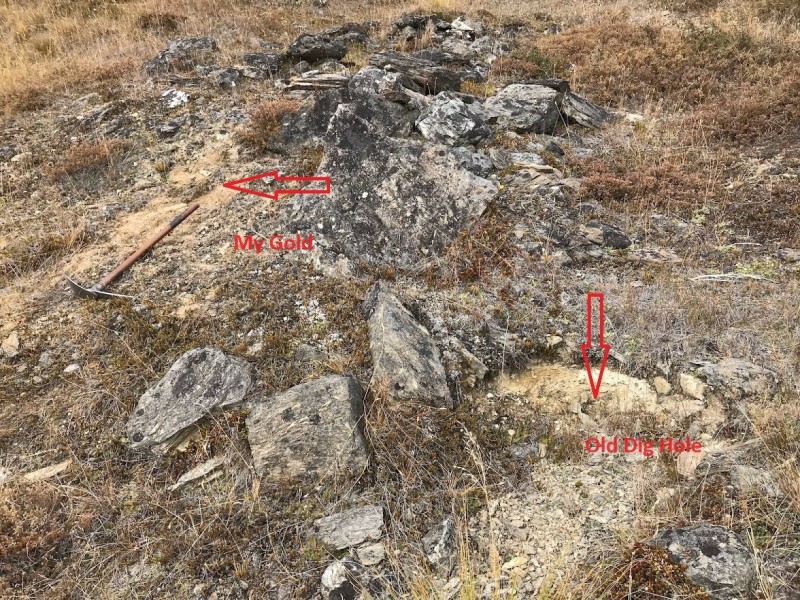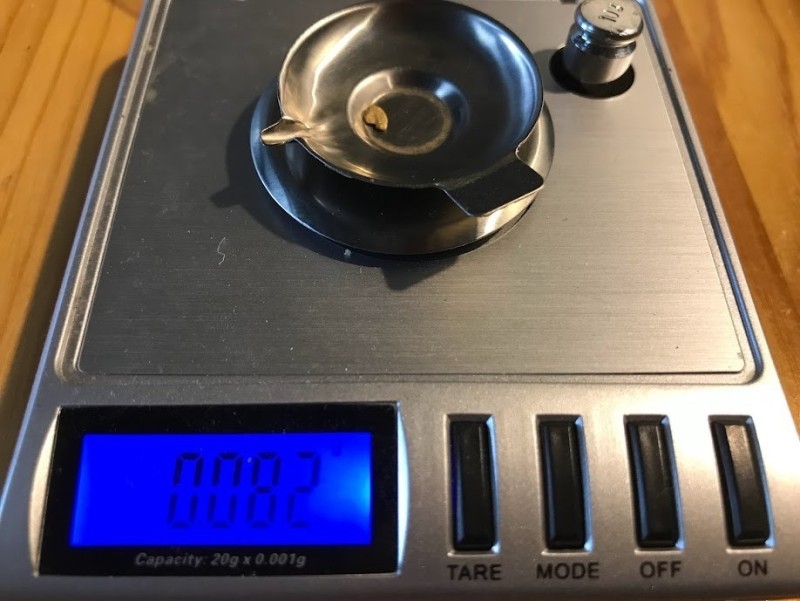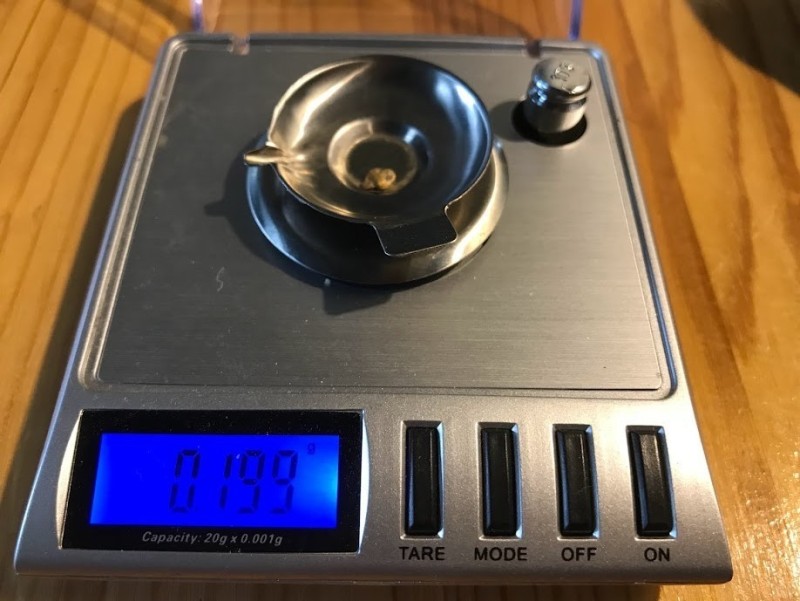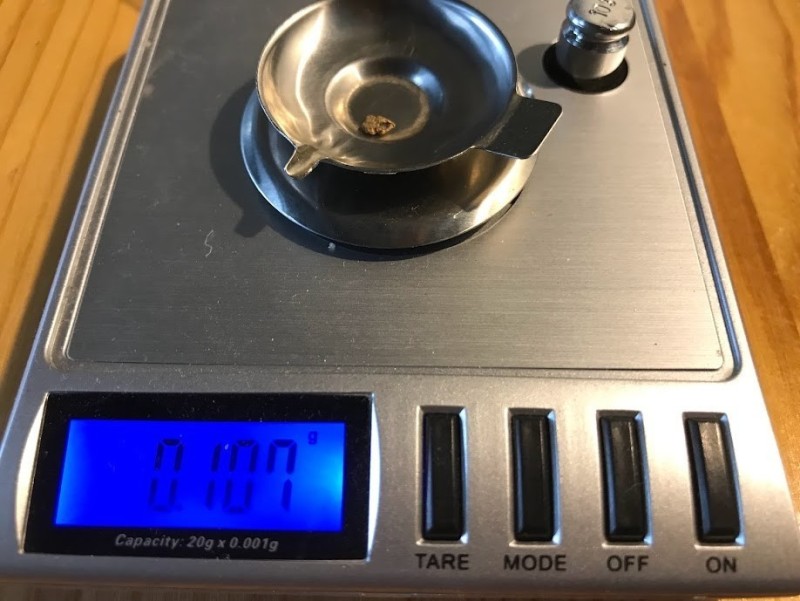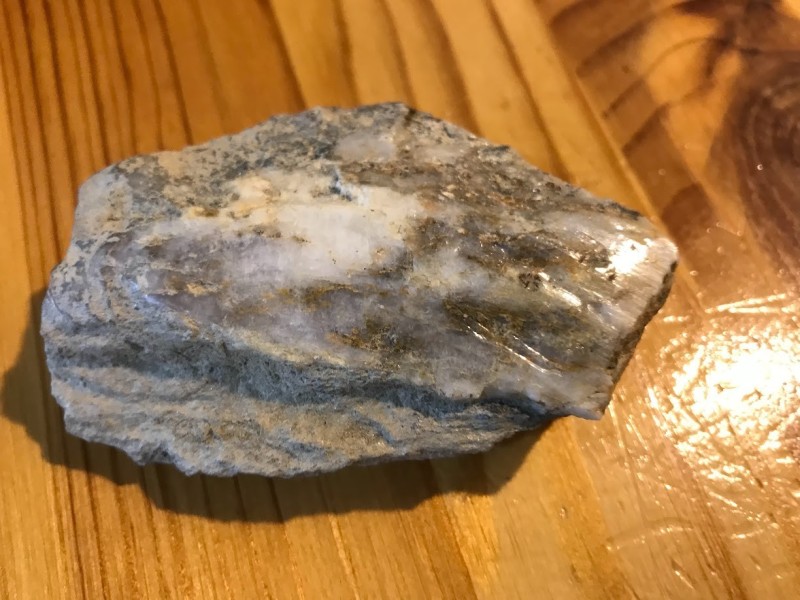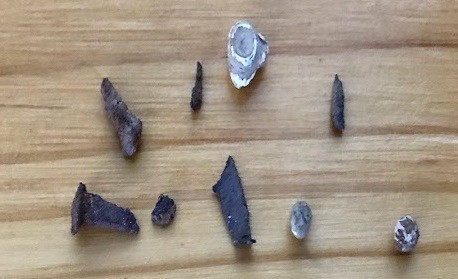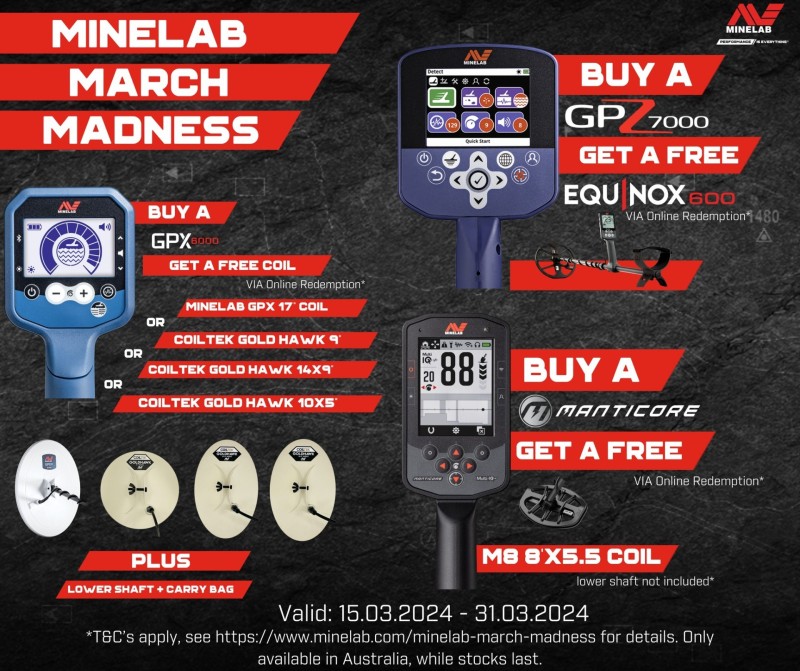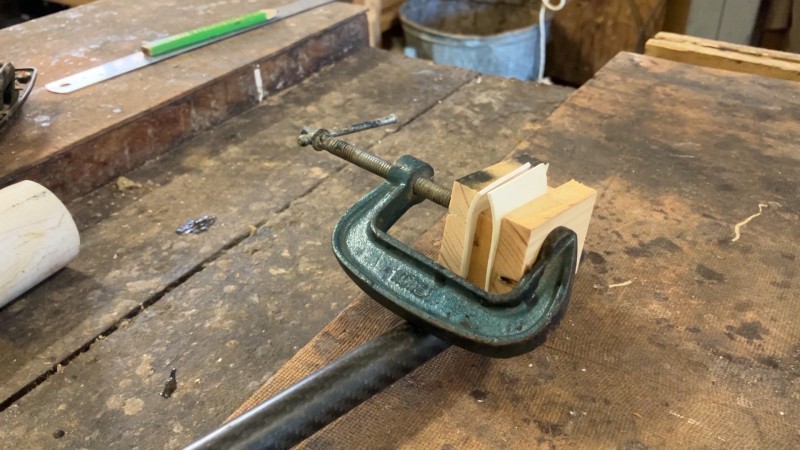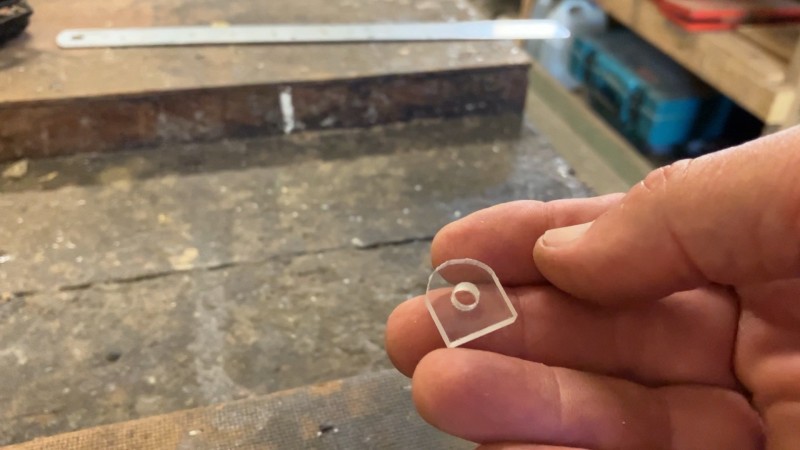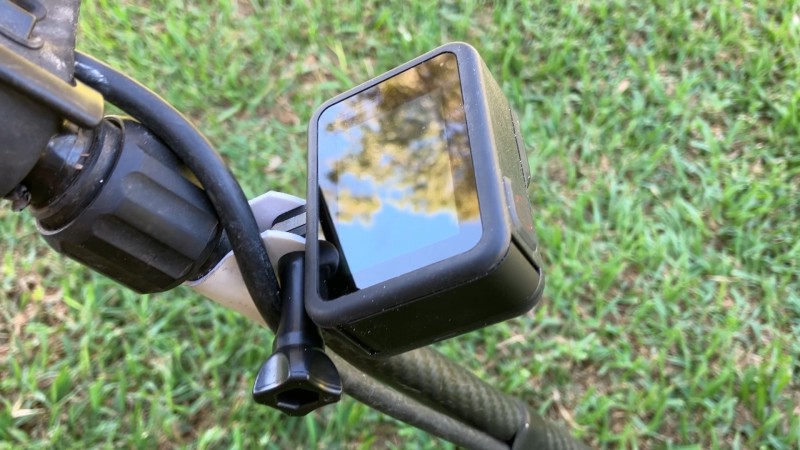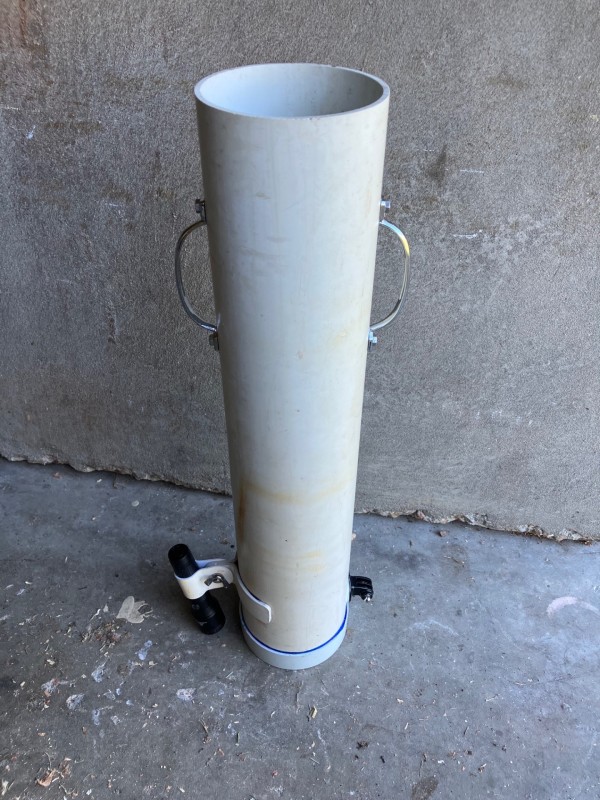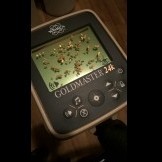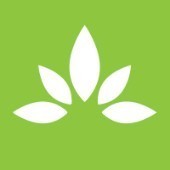Search the Community
Showing results for tags 'minelab gpx'.
-
Just thought I would share my wireless setup for anyone thinking of trying this. I have used Avantree Saturn Pro (Low Latency) bluetooth Transmitter/receiver and some Camcorder batteries. I have also got a couple of Lipo batteries from my RC which run the 5000 really well as they keep their voltage for longer. The leads I made myself with genuine power plugs and a deans RC battery plug and a 1/8 audio jack so as to go straight into bluetooth wireless module. These little module are very good and are lasting well over the 8 hour mark on a charge, and their size and weight make them very versatile. The 7200mah pack and wireless module come in at 325 grams with leads included this lasts about 5-6hours I have made up a couple of 3400mah packs with 18650 cells and these weight 180 grams with module and leads and lasts about 3 hours. I have a 5000mah Lipo hardcase which weight 200 grams with both wires and module, this goes for 7 hours before the low voltage alarm comes. Lipo batteries aren't for everyone as they can be a little volatile, but I am yet to have one explode and treat them with care when charging with a good lipo charger.
- 29 replies
-
- 4
-

-
- batteries and chargers
- headphones and audio
-
(and 1 more)
Tagged with:
-
I currently have a GP3000, that I recently purchased, to go over patches that I have cleaned out with the GPX6k with the sole purpose of finding larger, deeper gold using a medium to large coil. Would the GPX4000 have any significant advantages over the GP3000 for larger/deeper gold? It appears that the few extra timings it has are targeted to small/shallowish gold and I have the 6K for that.
-
Hi Folks, A couple of weeks ago Joe and I spent a day detecting some old elevated workings with the zeds. It was obvious that they had been hit hard over the years and we could see that they had been raked within the past 12 months. It didn’t worry us though as it was a new area and we approached it as an adventure. After working the area for about five hours, we decided to head home early as we had only scored five or six small pieces for our effort. On the way home, we decided to stop and inspect a gully that was located about .5 km to the north of where we had been working. We left the detectors in the car and just walked a couple of hundred metres upstream to look at the potential of the area. What we saw impressed us so we thought that we would do a bit of research and come back another day and run our detectors through some of this country. As the majority of this creek was running through private property, we thought that there may be a chance that this gully had received a little less attention than some of the more famous gold bearing streams in the area. A quick chat with the owners of the land gave us a creek name but nothing else. To their knowledge, there was no stories related to alluvial gold mining in that particular spot. A bit of research showed no reference to the creek at all. The land title maps showed that 70% of the creek was on private property with the upper reaches running through state forest. It was interesting to see that this was an old title where the creek was actually part of the property itself. In other words, there was no public access to the stream without trespassing. That was great for us as we had permission to explore the area. Further research showed that a series of hard rock mines situated on the ridge above the gully had produced payable gold 120 years ago. That was enough information to get us excited. We developed a plan of attack and decided to come back the following week to explore the area. Joe and I decided to use the 6000 with the Coiltek 10x5 attached. We thought that there should be plenty of potential gold traps in the creek and this setup would allow us to get into tight areas and squeeze out any little bits of yellow hidden in cracks or crevices. If we found gold, we could then come back with zeds and look for deeper, larger pieces. The bottom section of the creek was deep ground with very few features so we just quickly ran our machines over this country, concentrating on the wings of the creek. The alluvial soil quickly changed to a mineralised red soil as we moved upstream. There was plenty of hot rocks and quartz in the gravels which gave us hope for better things higher up. After a few hundred metres the country changed. The sides of the valley became quite steep and a rocky bottom started to appear. The country was outstandingly beautiful. Pools of water, small waterfalls, rock bars and huge rocks were staring back at us. It was breathtaking. Joe and I just looked at each other and all we could say was “Wow”. We had found a different type of gold and we just had to stop and take it all in. This type of beautiful country continued all the way upstream. As we were in the mountains, the elevation changed rapidly. We had to climb quite a few rock faces and wade through slippery pools of water in our search for gold. Quartz stringers were running through many of the rock bars and we were hopeful of finding something but targets were scarce. In one area we found a lot of barbed wire fragments which in hindsight may have been part of an old boundary fence. The rock bars that we encountered held beautiful gold traps but they were barren. There was very little evidence of any work being done on the banks by the old time prospectors so we had a good idea that this stream may not hold much gold. We continued upstream until we made it to an area that was directly below some old mines. Joe continued upstream while I walked up the steep bank to try to find the location of the first mine. The undergrowth was quite thick and it was a hard slog to push through the scrub. I walked to and then around the area where the mine was supposed to be located but I never found it. The problem with many of the old mine locations is that accuracy is often not as good as it could be. I met up with Joe again and we detected the immediate area before heading down stream again. The whole area still looked promising but nothing upset the detector threshold. We both agreed that the total lack of lead shot, miners nails, bits of rusty steel etc probably confirmed our suspicions in relation to the creek. To prospect by definition often means no returns in relation to what is being chased but in this case the rewards were amazing. Joe and I worked our way back to the ute with empty rattle jars and smiles on our faces. It had been a great day out. While we were packing up I suggested to Joe that we could spend an hour or so at the old diggings that we had worked with the zeds the previous week. With the small coils on the 6k’s we could possibly scratch out a couple of pieces. A five minute drive put us at the diggings and after about an hour and a half we called it quits with a few scraps in the rattle jar. That was just a bit of icing on the cake to finish off a great day out.
-
I was watching this video from Woody that he did about 3 months ago, oddly my GPX 4500 had the exact same problem whereby they'd painted the housing causing the alloy front and rear plates not to contact the housing, thereby making the alloy grounding not perform as it was intended so I had to file the paint off and it worked very well. Then with the 6000 it appears they've done the same thing, EMI shielding painted the housing, yet not connected it to the ground of the detector. It's just bizarre how these things take place. I do wonder if this is something that was a problem on early 6000's and they've resolved as they've worked it out, and later ones have the grounding done properly. I've no idea if mines been done or not, and the way he does it is a bit crude although working, I'd not do it that way with the squished washer, the tap washer seems a bit better and something a bit better than one of the fibrous cardboard types might be alright, still I prefer if this is the case and there is a grounding problem on them they fix it as a warranty repair, perhaps as part of the EMI fix with the inductors this was part of their procedures fixing this problem too, as I did notice not only was my detector no longer going crazy randomly it also appeared to be more stable with general EMI.
-
I have run into something that I don't remember reading about on the forum. The original audio fix was done to my 6000 early on, I was following the jasong thread and sent mine in to be done immediately. I have always used the supplied OEM headset and the machine has always done what it is supposed to do. Fast forward to now, I can no longer use over the ear head phones. Yes I have a Torus but have never liked it so I tried using speaker only. The speaker did not have the volume I believe it should and I would still get the erratic threshold at times. All this was not a problem when using the OEM phones. Contacted Minelab S&R in Illinois and was told to send it in. Original fix was done in Pa. The following is a cut and paste of their it's done message to me. " Wendell, I've completed the repair on your GPX 6000. I have entirely replaced the internals of this detector. I tested it out after installing the new boards and the unit seems to have perked up in terms of audio, and I did not notice the erratic threshold any longer. I will be sending this unit back to you via USPS later today. " I have used it briefly and it is very stable and the speaker volume is far better. I am pleased and going to guess that the initial fix was a patch and this would be the fix.
-
Rumours have been swirling around for weeks on social media about Nugget Finder discontinuing their current line of GPX coils and thinking of remaking some of them in a new design to better suit modern detectors like the Algoforce, and the rumours are larger sizes are all discontinued permanently. I'm hearing the Sadie is completely discontinued with a new small coil coming in the way of the 12x7" by using the GPX 6000 Xceed coil housing which I've seen a Youtube video of someone testing that particular coil on the GPX 5000, that way at least it can be a spiral or semi spiral and more sensitive than the Sadie, as the spirals leave it in the dust. I was quite disappointed by the Sadies performance on my Algoforce and it's by no means the detectors fault, it works brilliantly with better coils, I bought it specifically for that detector, a brand new coil at the time I bought the detector so pretty disappointed to hear it's now a discontinued model due to problems, the feedback is it didn't work well with the modern GPX compatible detectors like the Algoforce, the other detectors that had problems with the current Nugget Finder GPX coils were the modified GPX's from the likes of Detectormods. Sure the coils were intended for the GPX in it's original form and worked well with it but I guess the volume of sales now are more from Algoforce users and perhaps the modded detector crowd as the mods now seem to have matured to be a very good performance enhancing product. Further rumours are Detectormods have been working with NF on this matter. I thought it was just rumours swirling yet it became too real to be rumours when I saw it on the Nugget Finder website. A dealer from the Prospectors Patch released a Facebook video confirming this is taking place, so that's why I'm now posting it as I hate supporting rumours, this gives it some credibility seeing NF aren't very good with communication, although their website has been updated to say the coils are discontinued except for the 12x8" EVO and 12" round but others have said that's just until it runs out., although I'd highly recommend not buying one for the Algoforce, lots of reports of the 12x8" in particular not working well. Not sure about the 12" but people did say older serial numbers worked well but not newer ones (this was part of the rumours) I know many don't use Facebook so here's the Prospectors Patch video on Youtube. Looks like it's the end of an era for the NF GPX coils, hopefully they can get a few models up to scratch like the 12x7" new shell design and the 12" round working well for the Algoforce and re-release them sometime in the future. I've been using my 14x9" EVO on the Algoforce and had no problems, always loved that coil, works as expected but it's an older serial number one that I've had a few years from my GPX, it seems the problems were newer serial numbers, again rumour I can't verify the validity of that, it could be all of them. Have any NF dealers or anyone on here heard more about this to enlighten us? On a side note, all mention of any other Xceed coils for the 6000 have been removed from their website too, so it looks like the other two sizes are possibly never coming out, bit disappointed in that, I wanted the little one.
-
Hi Folks, Have you ever been out prospecting, noticed a quartz vein and run your detector over it with fingers crossed? I think we have all done it and generally move on as most of these veins or stringers are barren. Yesterday was a new adventure for Joe and I as we were getting into a new area that we had never detected. It was a small creek that had a history of containing gold with the surrounding hills being mined about 130 years ago. As we walked up the creek we found numerous rock bars and bedrock which contained beautiful and potential gold traps but they were all empty. Narrow veins of quartz crossed the creek at regular intervals and sections of the bank were quite mineralised giving us hope. There was evidence of human activity with the usual rusty steel and lead shot but the yellow stuff was not showing up. The plan was to move quickly upstream leap frogging each other until we found something that would pull us up. We wanted to reach an area close to a couple of hard rock mines that were situated on the hills above the gully. Each quartz vein we walked past was a magnet for the coil and a quick swipe with the detector confirmed what we always expected. After about an hour we hit a spot where a rock bar crossed the creek and there was the usual evidence of quartz stringing it’s way into each bank. I ran the 10x5 across one of these veins and was surprised to get a sweet signal. It was in a few inches of water and was surrounded by some really hard host rock. If it was to be gold, it would be a major effort to break up the quartz to release the target. As it was an exploration adventure, we decided to keep going and have a closer look on the way back. Here is a picture that I took which shows the narrow vein attached to the host rock. Unfortunately the light created an awful reflection that doesn’t clearly show what we were looking at. The vein is about 25mm wide and was visible for about 1m before disappearing into gravels. We continued upstream until we stopped for lunch. At this stage the rattle jars did not rattle and we were beginning to think that we may end up being skunked. After a break we continued on but at about 2:30 we decided to start heading back as it would take us an hour or so to get back to the ute. Joe finally got a signal that required a large rock to be moved as the target was under it. Being in water, it took a bit of work to retrieve but finally a nice little piece of gold popped out. The Coiltek 10x5 did a great job to pick up this target at good depth. Joe and I continued to work our way back until I finally had a hit and started digging out a small piece of gold. Joe at this point was about 20m further upstream and decided to stop so that his machine would not start sending my detector into a screaming fit. He detected up on the bank and also picked up a piece of gold. We decided that this area would need further investigation but not today. We had to keep moving. We finally made it back to the quartz vein and decided that we had to try to chip out the target. Joe started hacking away at the reef like a man possessed and after about 5 minutes we noticed that the target had moved. The small pieces of quartz that were chipped out started moving down stream over the host rock. It was acting a bit like a sluice with the light material washing away quickly. As the water cleared, a small piece of gold appeared. It should have been photographed at that point but when when gold is spotted, logic goes out the window. The gold was placed on the coil and photographed close to where it was removed. You can see the vein above the coil and some of the broken quartz on the right hand side. If you zoom in you may also see another piece of gold sitting on the bedrock. I didn’t know it was there at the time but the coil told the story a few minutes later. A small amount of gravel was then moved and Joe ran the 6000 over about 1m of the vein. Another two signals were detected indicating that more gold was present. And here’s the hard bit. We had to walk away as it was getting late and light was fading. Looks like another trip back to the creek is in order. We will take cold chisels, a hammer and crevice tools with us to make life a bit easier. Any thoughts or ideas as to how we approach this task would be appreciated as it’s going to be a difficult job recovering the gold. What do we do if there’s more gold deeper in the vein? This will obviously do our heads in but in a good way. Here is a pic of the gold we found yesterday. Not a lot but enough to create another interesting memory. I might try to video the next step as it’s a bit different to what we normally do. cheers Les
- 10 replies
-
- 32
-

-

-
- gold found
- minelab gpx
-
(and 1 more)
Tagged with:
-
Hi everyone I’m looking at getting my first gold detector which will be the GPX 5000 2nd hand. I came across some information regarding different versions of the 5000 (which I cannot find again) and I am trying to find out what to look for to make sure I’m getting the later model/version. I am in Australia Thankyou
-
Just bought a used gpx 4000 with woodys mods on it. Trying to get it quiet. I cannot get it quiet no matter what I switch or turn or adjust or ground balance or auto tune. It is driving me crazy. Can’t even tell the difference between a piece of gold and the constant up and down noise of this machine. Nothing changes the constant sporadic noise.
-
I’m new to digging for gold. Although I’m a pretty seasoned relic hunter. I’ve been hunting for civil war artifacts , colonial relics and coins for years here in Virginia. I currently run a GPX 4000 with a 15x12 DD, 11DD, and a 10x5 DD. All minelab coils. I also have an older big box whites TDI with a 12 inch mono as well as an Equinox 800 with all the minelab coils. I live in the gold pyrite belt here in Virginia. There are many abandoned mine sites within a few square miles of me. Several fault lines. But not many people hunt gold around here other than one club that has a claim on a steam about 5 miles away. All that said, would it be worth me getting a mono coil for the GPX? Or can I do just as well with what I have turning them onto mono mode? I was thinking of an 11 inch mono commander or an elliptical mono coil of similar size. The soil varies around here. It fairly hot on the high ground and better ground down in the river bottoms.
-
Yesterday, JW and I went for a bit of a hike to a remote spot in the mountains, I hadn't been here at all since my GPX 4500 a few years ago, and JW had been a small few times since trying out his GPX 6000 and found a few bits. The hike in is what puts it on the backburner all the time ? It's a close drive from JW's house, but a big steep uphill hike, and from my house it's about an hour's drive so by the time I get home I'm stuck to the car seat, man it's hard to stand up after a massive hike and an hour's drive home after a day's detecting with the hike back to the car, at least the hike back is downhill all the way. I ran the car's seat heater the whole drive home to help the muscles recover! JW has a few years of age over me, but he is certainly fitter. It's a really cool place to go though, with great views of the surrounding mountains, unfortunately I can't put up scenery photos for fear of revealing the location to prying eyes, as you can work out the basic location by using the bigger mountains to get an idea of where I was. There has been a bit of mining in the area, and reworked in the depression years, but the earlier mining was done with a lot of work and water monitors (canons) blasting water at the hillsides to recover the gold. The Chinese hit it pretty hard too, staying longer than the other miners going over it again. It's interesting how they get somewhere, then just stop. The soils an interesting colour, almost white. Quite the drop off here down to the ground below, but oddly at least I think you'd be crazy not not to detect these high areas, as gold often pops up in the most unusual of places. My first bit of gold for the day was a bit of a surprise to me, it was a fairly faint signal, yet it was very shallow, I thought it is more likely a pellet although this area barely has any pellets at all, in fact it barely has any targets, if you get a target the chances are high its gold, aside from the occasional old bit of miner's junk like cans and a few nails most targets are gold so it's certainly a dig it all location. I took a little video of the target, so weak of a signal for the size of the gold I thought, although I'm more used to using the 10x5" Coiltek which is more sensitive but still, I was pretty disappointed. This is the little scrape of a hole it came from. The piece of gold. And its weight, quite a reasonable size piece for me, anything over .1 is pretty decent size for me ? I was so taken back by how weak the signal on it was I tested it this morning with the Algoforce to see how well it would do, even though it has the larger 10" round coil on it, I thought the Algoforce gave a better signal response on this particular piece. It's a bit of rough looking piece. The other interesting thing is it was right next to someone's previous dig hole, probably JW or I, we were likely using older technology at the time, as I'd only been here with my 4500 which no doubt would miss this piece of gold. It's very unlikely this person didn't go over the nugget and they missed it. The joys of newer technology. Next piece was in the path you walk on to hike to this area, there are tracks all over the place, mostly from old miners I guess however now they're hiking trails and go all through the area, you can even walk from one of my favourite ski fields to this area on tracks. This is it's dig hole, another very shallow target, an OK signal. This is the little guy Smaller than the last bit, but a much better signal. Just ignore the shaft twist in this photo, it's a feature of the 6000 ? After that I was walking along detecting the path, but no other gold to be found in that particular area, I did find old boot tacks though which is pretty cool, one spot had a bunch of them in one hole so I gave up recovering them, that miners boots must have fallen apart at that spot ? The gold spot is the dig hole just above the pick in this photo. Here is a little video of it, I haven't watched the videos back yet but it likely shows this one had a better target signal than the previous bigger bit I found. It was pretty easy to film gold finds here as there is so little junk about, so filming bits of digs is worthwhile knowing they're likely gold. Next piece was on top of a little ridge It was my biggest bit of the day, had trouble carrying it for the hike back to the car. Deepest of the holes too. A smooth bit. This is its spot. And a little video of it, the second target next to it was one of 2 pellets I found all day. That was my last bit for the day, the day felt like it went really quick though, we finished up detecting about 7pm, but both of us didn't realize the time and thought it was about 5pm I guess. A benefit or a negative depending on how you look at it coming from the GPZ and GPX 5000 is the 6000 can have the pick so close to the coil it's not funny, it always surprises me how close the pick can go, even when you lay it down recovering targets so while using it I have a belt attached pick holder and in this location I am glad I did, as sometimes its half an hour between targets so nice to holster your pick. The super strong magnet I've got in my pick handle makes life easy too, if I'm using it more regularly, I can just attach it to my pick holder using the magnet to save the effort. It stays there when walking around as long as the pick doesn't bottom out on the ground. So other notable things from the day, this piece of quartz was so weird, it doesn't show up as well in the photo but its flat smoothed off and much like a tile or bench top, and really glossy, so weird. You can see the shine on that one side, but the entire flat surface of it is like that, and its smooth and flat although the photo doesn't show that well. It's like someone's cut it smooth and painted it with polyurethane. And my junk for the day, there was also a nail which I left behind and you can see why I say it's a dig it all location. I'm used to digging hundreds of pellets on the farm land locations, this spot, 2 ? Both big pellets too. And last but not least, some old miners' tins I found, I left them where they were, a bit of history. I think this tin can was never opened. This one looked like a giant sardine tin. I think I'll get a bit fitter so the hike and day of swinging a detector around going up and over hills and mounds of soils doesn't wear me down so much and go back to this spot more often, I do really like going there, it just takes it out of me. It's very difficult to E-Bike there too as much of the path is on a cliff side with a big drop and very skinny path no more than 40cm wide in many spots, I've done it before but ended up walking the bike much of the way as I wasn't crazy enough to ride it through the steep drop off areas. Today I'm completely jelly legs and walking is a challenge ? JW doubled my gold count, he came away with 6 pieces, pretty small ones too, he was using the GPX 6000 and 10x5" Coiltek coil, a better choice of coil for the day, I think. I only had the NF coil on as it was left on there from a previous time. It was good to take the 6000 out though, leave it much longer and the old motor may seize from lack of use.
- 17 replies
-
- 34
-

-

-
- gold found
- new zealand
-
(and 1 more)
Tagged with:
-
Isn't this interesting, buy a GPX 6000 and Minelab will give you a free Coiltek coil. ? I have a feeling the Equinox 600 is about to be discontinued. Giving them away with a GPZ, on sale to clear stock in the US. They're giving away free M8 coils with the Manticore when people are still struggling to buy them the world over.
-
I find the speculation that the E1500 will somehow outperform detectors costing much more money to be, well, how to put this nicely… questionable at best. If this detector was GPX 6000 class it would be stupid to sell it for one quarter the price of a GPX 6000. I don’t think Alex is stupid. Here is the current price structure in Australia (U.S. prices below) as of today after Garrett just introduced the lower priced stripped down Axiom package: 1. GPZ 7000 $10,499 2. GPX 6000 $8,999 with two coils 3. Garrett Axiom $4,999 with one coil (Axiom Lite) 4. SDC 2300 $4,399 5. E1500 with Sadie & Battery $2649 6. Minelab Manticore $2499 7. Gold Monster $1299 I have pretty solid information in hand indicating that you are going to get what you pay for. The E1500 is a very affordable option at close the price of a top end VLF and will outperform said VLFs on gold in mineralized ground. Time will tell but I think the E1500 will fall short of SDC 2300 and Axiom level performance, essentially being a bridge between VLF detectors and those models. The 6000 and 7000 will continue to rule the roost but at twice the price of the SDC/Axiom level you are not getting twice the depth. Pulling a number out of my ass I’d assign a very debatable expectation of about a 15% increase in overall performance at each major step up in price. People can of course argue that number all day long but I think it is very important to give newbies some sense of reality. Twice the money does not get twice the performance. Gains are more like 10% - 15% - 20%…. pick your number, but it’s not double, triple, quadruple. If I was still selling detectors I’d explain to this new customer that they can go find a gold nugget with a Gold Monster or a Manticore. I’d explain that for not much more than a Manticore they could get an AlgoForce E1500 and be able to deal with mineralized ground and hot rocks that will give the VLF models real trouble. I’d tell them that for substantially more money they could get some very solid bang for the buck in the Axiom/SDC range, a step up from E1500 but still not top tier. Finally, I’d tell them that if money is no object and they simply want the best performance they can get, to look at the 6000 or 7000. I’d comment that out of the box with provided coils the 6000 would have the edge for smaller gold, and the 7000 the edge on larger gold. Adding aftermarket coils (and more money) to the 7000 can close the gap between it and the 6000 on small gold, but nothing you do to the 6000 will have it hitting the big stuff as deep as the 7000. That would be my short and sweet sales presentation and I offer it up as the most simplified big picture no B.S. look at the scene as you are likely to find. My somewhat educated opinions only, feel free to toss in trash bin if you don’t agree. In the States this would be the situation if the E1500 could be had here (coming in late 2024 / early 2025😞 1. GPZ 7000 $8,999 2. GPX 6000 $6,499 with two coils 3. SDC 2300 $3,599 4. Garrett Axiom $2,999 with one coil (Axiom Lite) 5. E1500 with Sadie & Battery under $1999 6. Minelab Manticore $1699 7. Gold Monster $799
- 45 replies
-
- 44
-

-

-
- garrett axiom
- algoforce
-
(and 1 more)
Tagged with:
-
Please help me out with some GPX experiences. Living in the eastern US I don`t have the opportunity to use the 5000 much. I try to do two or three trips a year in gold country, so my actual time on the machine is limited compared to those who can get out more often, so any advice or helpful hints are much appreciated to shorten the learning curve.
-
Hi Folks, It’s Sunday afternoon here and I’m trying to get ready for a few days detecting over the next couple of weeks. I’ve been working some gully areas with a mate but he’s gone away on a prospecting trip for a month and it looks like I’ll be working solo during that time. We put out a YouTube clip last week and it was so easy with two on the job. When we detected a target, one person would film as the other person dug out the buried metallic object. It saved a lot of time as normally tripods etc need to be set up and this often becomes a frustration that can take the edge off a trip. I decided that I’d mount my GoPro on the shaft of the 6000 to make life a bit easier for some of the footage that I plan to take on the next outing. When I looked through the various assortment of mounts that I had for the camera, there was nothing suitable for the job so I decided to make one. It is a simple task that can be achieved with some PVC pipe, some basic hand tools and a hot air gun. A piece of 50mm pipe was cut to 30mm in length and a slit was cut down one side. A spacer block and two cramping blocks were then cut from some scrap timber. You can see on the left hand side of the photo that the lower shaft of the 6000 was ready to be used as a mandrel to shape the PVC. The hot air gun was then used to heat the pipe until it became soft and pliable. This only took about 10 seconds. The PVC was then shaped around the shaft and the blocks were positioned in place. A G cramp held the moulded plastic in place until it was cured. I had to repeat the process a couple of times until I was satisfied with the shape of the mount. It was a simple matter of reheating the PVC to soften it before reshaping it again. The mount took a couple of minutes to cool before being trimmed, shaped and drilled to fit the GoPro. An off-cut of 3.5mm acrylic was shaped as a spacer to fit between the camera legs. Stainless washers could have been used for this component. The mount was attached to the detector and secured with the standard locking screw and a 5mm wing nut. Using scrap PVC is a cheap way of moulding all sorts of mounts for prospecting gear. I’ve just finished making a bathyscope from some 100mm sewer pipe. You may be able to see the light fittings at the bottom. They were all made using a similar method to the mount shown above. I noticed a local prospector was using a bathyscope when he was detecting in water. I thought it was a good idea as it can be time consuming trying to recover gold from submerged crevices without one. Have a look at Bedrock Gold’s channel if you get the chance. It really does speed things up.
-
In his long-winded video, he finds that there is nothing connecting the PCB to the shield, the confirmation that 2 components are replaced to fix the speaker EMI issue, the graphite paint is very patchy (and has no screen wire embedded to average it) and after doing '5 or 6', he confirms that they are all the same. I agree with him, it seems extremely odd to have only a passive shield and hope that the detector can combat EMI. Something's not right methinks....
-
The cable and chip module that I salvaged is from a used GPX 17”x13” coil. The graphite coil shielding has a separate ground/drain wire. I haven’t been able to use it with a standard GPX 5000 coil because the ground/drain wire is internally connected to the mono cable coax shield. Also the GPX 6000 appears to be finicky if the inductance, capacitance and resistance are not just right. I don’t know if the 11” ID chip would signal the control box to expect some different coil specifications. A few days ago I salvaged the cable and module from a defective GPX 6000 14” Double D coil. I have wired it up to a standard 5 pin connector to adapt to the X-Coil connectors. I also rewired a ML GPX 5000 Commander 11” DD coil to the same pin connections as the X-Coils. In testing there are no coil faults and it appears to be working. But with both a GPZ 14 coil and the modified 11” DD coil there is very low sensitivity. I will do some troubleshooting to find out what is wrong.
-
Hi all. A fella I know, who we will call Jim, has been given (yes GIVEN!!) a GPX 5000 and has asked me for help to set it up. I think it is a year or so old but never been used as the original owner is unwell. I recently helped my sister's boyfriend who had issues with his 4500 so had roughly read the manual. The 4500 actually had a speaker issue as well so although we got it working OK the Threshold was still quiet. My less than expert diagnosis (from a bit of research here and PA Forum) was that his curly cord might be a bit defective and it isn't boosting the audio to the speaker. Anyway, I stopped around the other night and helped the bloke with the 5000 as best as I could having roughly ready the manual again. Now this bloke is technology illiterate and is not someone who is going to sit down and read or understand the 112 pages of the Minelab GPX 5000 manual. I did give him a print out of Steve H's GPX 5000 bit from the Detector Review area of this forum but even that is beyond him (the Timings/Mineralisation diagram for example). So, I have set the 5000 up to a point where the Threshold is humming nicely and we were finding targets in the bush quite easily. With the 5000 are an 11" mono Commander and I think it was a 17"X11" mono Commander. No DD which I thought was unusual but maybe they came in a package without a DD? The original owner might still have a few bits and pieces too as it seemed there were a few things missing. Have written up what I think are the absolute essentials for Jim to know about and change if he feels confident to do so. There are sooooo many controls on a 5000 that I feel like a 5 year old is in control of the cabin of a jumbo jet! The following is 112 pages condensed down to 2 ? Wondering if those with the knowledge would be happy to peruse it and advise if they think it is a reasonable synopsis of all that is important. I have left out anything which I don't think is imperative for Jim to know or play with - at least at the start anyway. Things like battery voltage, etc. Have left many other things like Target Volume at factory presets. I also don't want it running really hot and Jim digging lots of ghost signals. So are my timings suggestions reasonable for moderate mineralisation ground with some hot rocks, moderate amounts of red, wet clay, etc? I generally cannot run Normal mode on the GPZ or the GPX6 in the local area if that is some guide. Rx Gain and Stabilizer - I think this is maybe going to raise the most discussion ? I have another old mate over near Mt Beauty that has a 5000 but he is a bit the same as Jim as he has no idea about technology either. But, he does find more than his fair share of gold and his detector runs very smooth and appears particularly sensitive to genuine targets without digging a lot of ground noise. He was previously running his 5000's Rx Gain and Stabilizer at settings provided by the dealer he had purchased off. He was then told by another old bloke to try the Stabilizer at half of the Rx Gain. Whatever the Rx Gain was, make the Stabilizer half. So that is what he has done ever since and he feels it is heaps better. Having never used a GPX 4500 or 5000 other than twice in the past 2 weeks I would really appreciate some constructive feedback before I pass this on to Jim ? Cheers, N.E. GPX 5000. Front Panel:: Search Mode: Choose General. Deep is for detecting a small area slowly and carefully. Custom - then provides you with Patch, Hi-Mineral, Hi-Trash and Pinpoint. Soil/Timings: Normal - best wide range of performance. Enhance - cancels most ground noise and hot rocks. Special - If you choose Special on the Front Panel the following settings will then be available on the Rear Panel. - Sensitive Smooth - For severe soils. - Fine Gold - Good for small gold in mineralised soil. Ignores a lot of hot rocks and ground signal. - Sensitive Extra - Can increase hot rock signals. Better for mild ground. Good with Double D coils. - Salt/Gold - For very salty areas - salt lakes, high salt content gold fields, beach. - Sharp - More powerful but will increase false signals. - Coin/Relic - For low mineralisation areas. Poor ground balancing ability in high mineralisation. My suggestion is to start in Enhance. Could also try Special (Front Panel) and then Fine Gold (Rear Panel). Coil/Rx: Double D. Mono. Use this always unless you actually use a Double D coil. Cancel. Ground Balance: Tracking or Fixed - use Tracking. Back Panel:: I have only covered the things which you might need to alter from the Factory Preset settings. Rx Gain: Has a Range of 1 - 20. Adjust upwards until the Threshold starts to break up/get wobbly and then slightly reduce until the Threshold is stable again. Stabiliser: As Stabiliser increases it increases the sound of faint signals. But, it also increases the sound of EMI and ground noise, etc. Old mate thinks it should be half of what Rx Gain is. So if Rx Gain is at 10, then set your Stabiliser at 5. Audio Tone: Set it to suit your hearing. Factory Press is 50 but lower tones for older people can be better. On a day of detecting: Set up your Front Panel - Search Mode - Soil/Timings - Coil Rx - Ground Balance. Turn on the detector. Set the Threshold so that you can hear it easily. Do an Auto-Tune. If the Threshold is not nice and quiet - do it again. If it is still noisy check you Rx Gain and try turning it down. Set your Rx Gain (rear Panel) so that it is as high as you can go without the Threshold being wobbly. Set your Stabilizer at half of the Rx Gain. Perform a Ground Balance. Turn the Threshold down so it is just an audible Mozzie Hum. Start detecting.
-
I have permission to hunt a property that is a couple miles away from Pea Ridge Battlefield. I have been finding some keepers with my Deus 1, with the 9 " and 11" X35 coils. I recently picked up a GPX 4500 in great shape, with a 12x8 platypus DD coil, 2 11" mono coils, a 11"DD, a 15"x12" mono, and a 18" mono. I going to see what I can find. I have used the SD2000 up to the GP Extreme, but not the GPX 4500. My question to the members is, how good is the iron reject, can it knock out iron the size of 16d rusty nails.
-
I have been looking at pi detectors lately never used pi before have used gold monster and regular coin machines alot want a pi for gold nugget hunting. I have heard alot of good and bad about the 5000 great detector but very complicated as well. Most gold in and around redding california are little bits from what ive heard obviously big chunks come out rarely. Is a 5000 worth it for a novice who doesnt get out as much as he would like or find something simpler like a sdc 2300. Thanks in advance. Will check back at replys later at work now
-
Hi all, I work for Avantree, and I stumbled upon this forum and noticed that many of you in the prospecting community are enjoying our Torus for use with your detectors! We would love to continue supplying quality audio devices for the prospecting community. We're currently developing a new product called the Sky Infinity. It is a bundle including our Infinity earbuds (https://www.avantalk.com/products/infinity-multifunctional-wireless-earbuds) and the Relay Bluetooth transmitter (https://avantree.com/relay-airplane-bluetooth-adapter-for-headphones). We will also include a 6.3mm to 3.5mm adapter so you can plug the Relay into your detector. The Infinity earbuds have the aptX Adaptive and LE audio codecs. aptX Adaptive's latency levels are slightly higher than aptX Low Latency (which the Torus has) at 60ms delay v.s 40ms, but provides far superior sound quality. LE audio is a new technology as phrunt mentioned earlier, which trumps both aptX Adaptive and aptX Low Latency. Unfortunately, we do not yet have a transmitter that supports LE audio, but if there's enough interest in this, we can definitely develop one! If you're interested in trying the Sky Infinity bundle for use with your detector, let me know via message. We can send you one to try! If you have any other ideas for a product that would work well with your detector, please share and we can develop something great for you.
- 74 replies
-
- 22
-

-

-
- minelab gpz 7000
- headphones and audio
-
(and 1 more)
Tagged with:
-
Hi Jeff, An update...2 of us have sent our Axioms back and waiting for a response. I hadn't heard anything after a week so emailed Garrett Australia. I got this "We have received the machine and I will be testing through the week." - so obviously we are not a priority to them. I spoke to a Garrett dealer last week and mentioned the issues, he remained tight lipped and just rolled his eyes and said he was about ready to rip their sign off the wall. I also spoke to a detector repair technician and again, same response - they didn't think much of them at all indicating their performance was sub par to the price. Word obviously is getting around and Garrett don't seem to be interested in listening. From what I can see - their ground handling ability is the first major problem and without that, not much else will work. Being that the majority of detector basics come from a component level - looking for a software fix isn't going to be easy without changing the electronics. The GPX 6000 has a lot more that needs to be corrected than the EMI speaker system fix. That's just the official recognized problem. A company called Detectormods here in Aust. offers the upgrades at a rather steep fee $$$. https://detectormods.com/news/20/all-about-the-new-2020-upgrades The guy "Woody" had a YouTube channel and explains further short comings of the 6000. Be aware, he rambles on for about an hours to part with 15 minutes of actual information. To his credit, I applied some of the mods from one of his videos to my old 7000 and is ran so smooth and quiet, I had to "kick the coil" to see if it was still on. I run bogenes so is dead quiet till it hits a target. ..........."Basically, I feel ripped off by these two giants of the metal detecting industry more often than not."............... At least with the GPX 6000 you have options and a company that admits some of the detectors faults. As for the DD coils, people are always talking about needing them and our coil manufacturers "usually" listen....eventually. I'd say hang in there and maybe contact Nugget Finder, Coiltek and X-Coils to see where they are at? Garrett just plain deny there is any problems although they always counter with "we are happy to test the detector for any possible issues" then get our detectors back "No Fault Found"???? I'd strongly suggest selling the Axiom and use the 6000 until a successor for the 7000 comes out - which could be some time yet. Maybe even send it over for the mods to fix the issues with the money from the Axiom, you will be happy you did! I'm pretty sure that is currently the only place offering them. Ahhh, the life of a detectorist..............................
-
Just sent my 5000 to Mick at Detectronics. Any good advice on settings when it comes home. Sounds like 3oclock is the sweet spot on the gain. We have pretty easy ground here in Montana in most places but do have some hot spots here and there. Also with the new level 4 mod sounds like the evo 15" is the go to all around coil. Thoughts?
-
Maurice Coppola (a very well known Golden Triangle prospector) has another video comparing various detectors and coils. Well worth a watch.
-
So I'm in Idaho and dont see Algoforce making any inroads here for a at least a few months. What can I do to upgrade my gpx 4500 ? Don't have any aftermarket coils but I'm working on it. Are any upgrades going to be worth it? I have have learned a lot on this forum and thank everyone for posting their knowledge. I don't always have the time to geek out on the subtleties that might give me an edge. Yes I have found gold and do my research. I guess I'm asking if the aftermarket coils are worth it?


